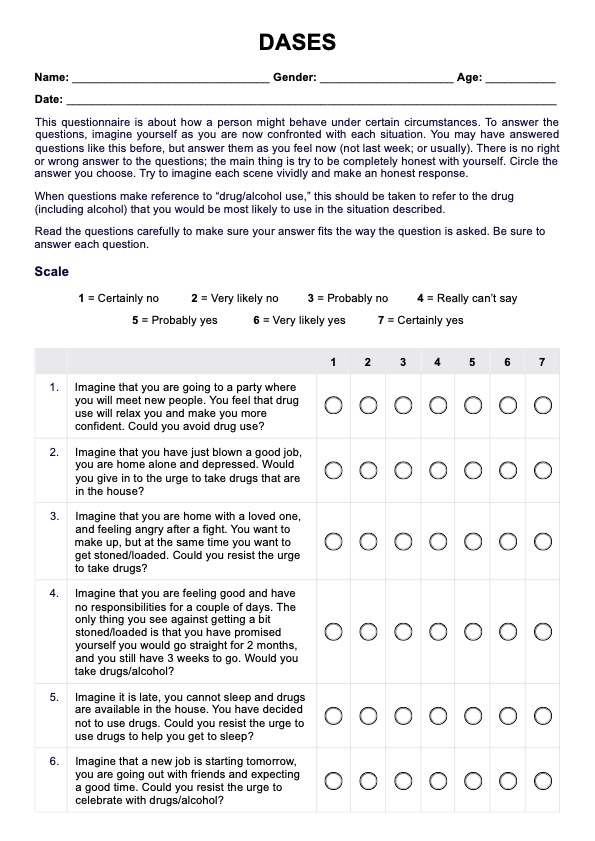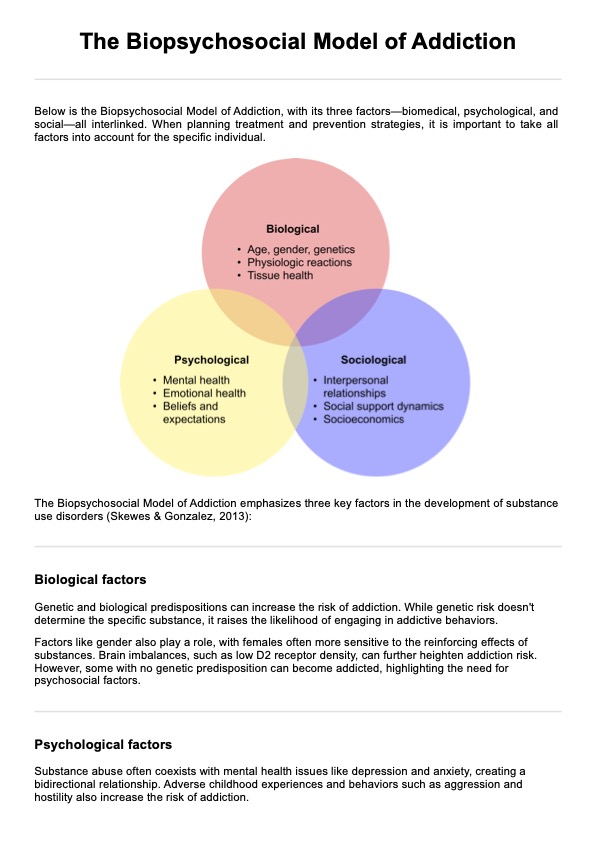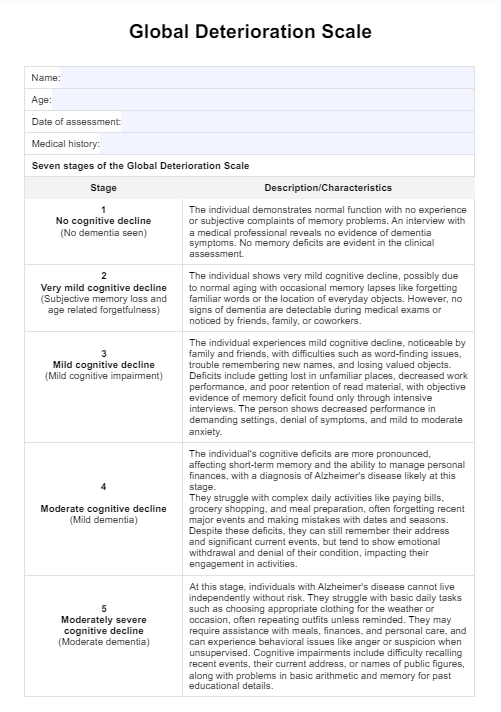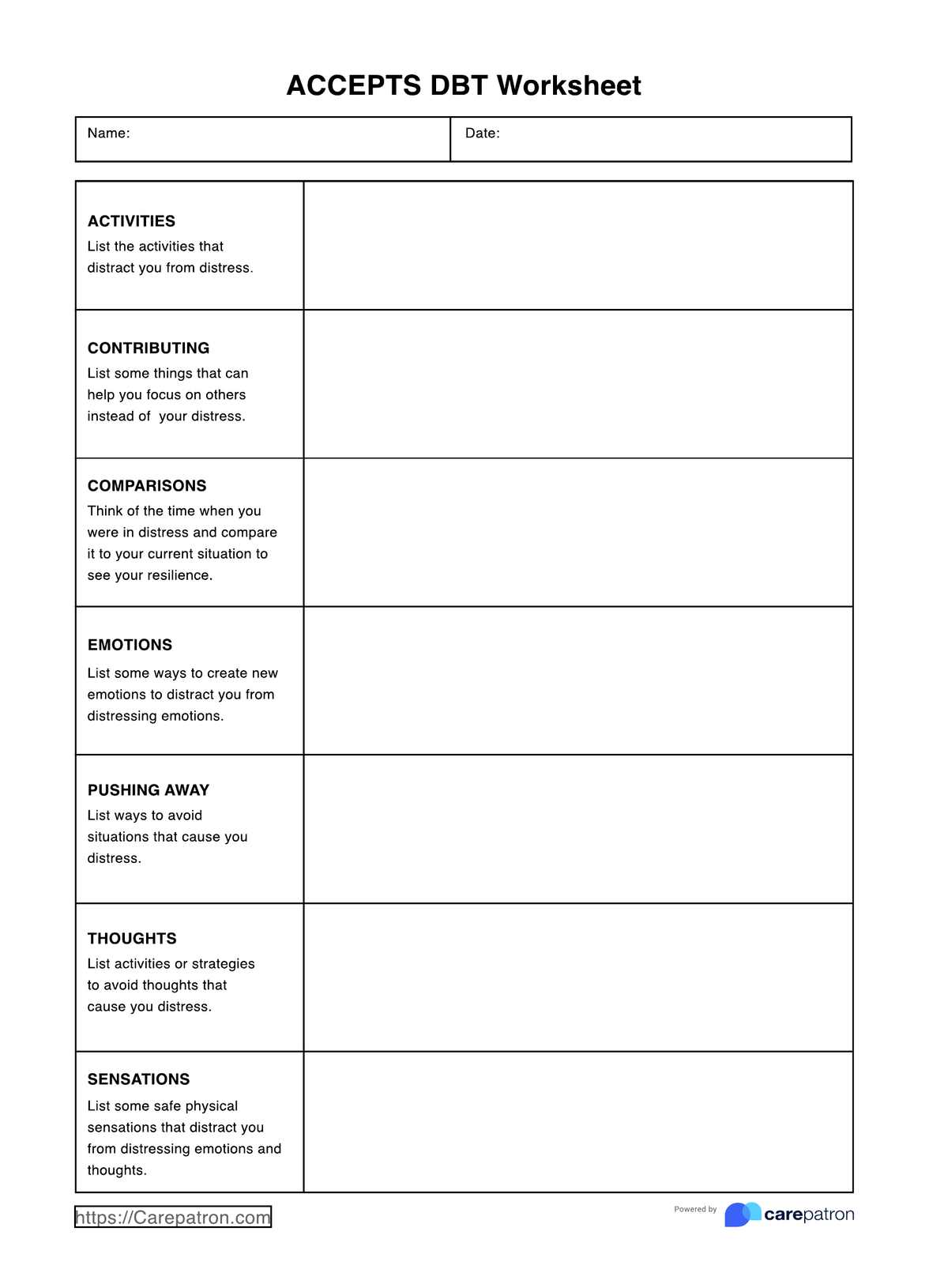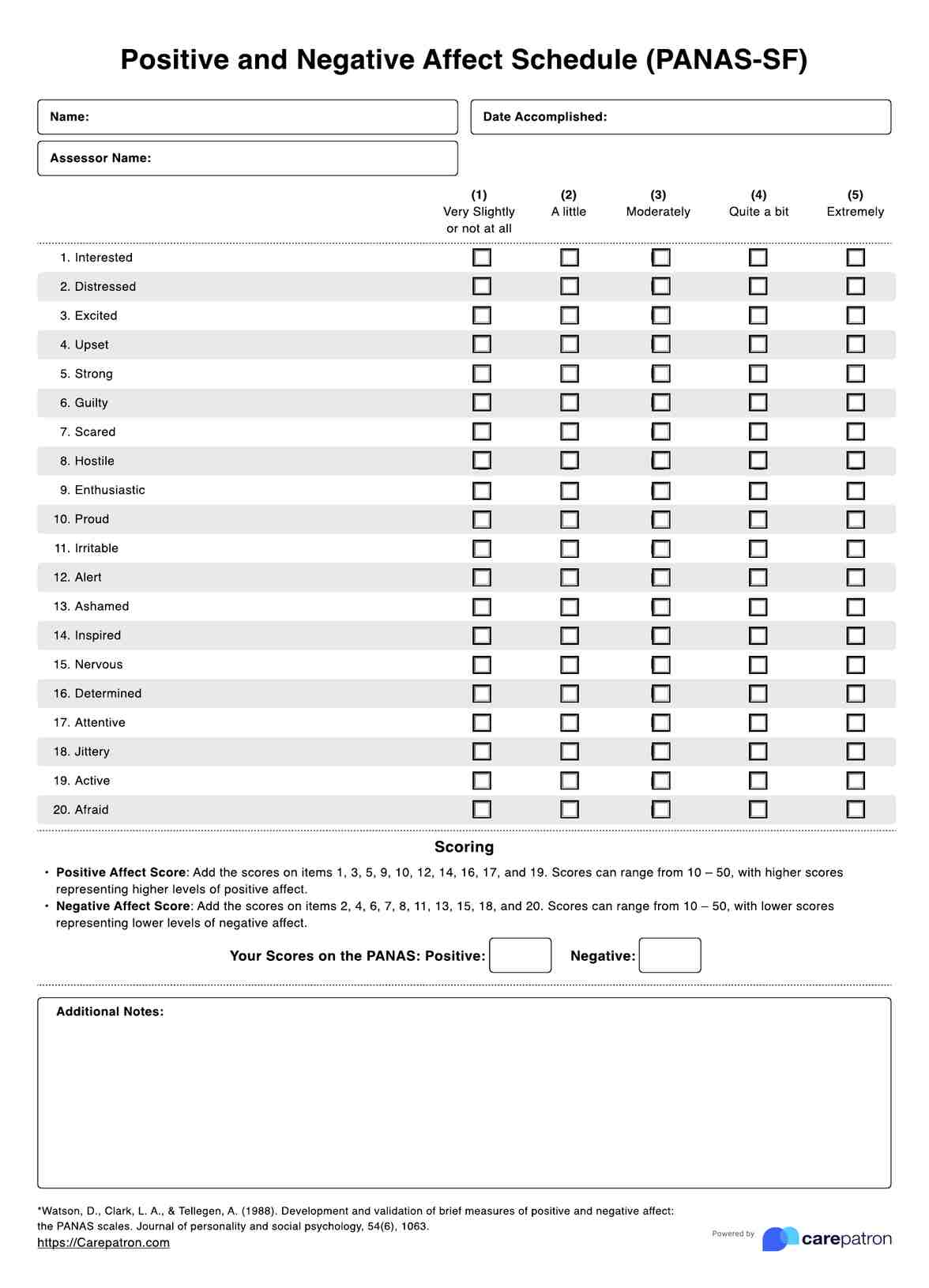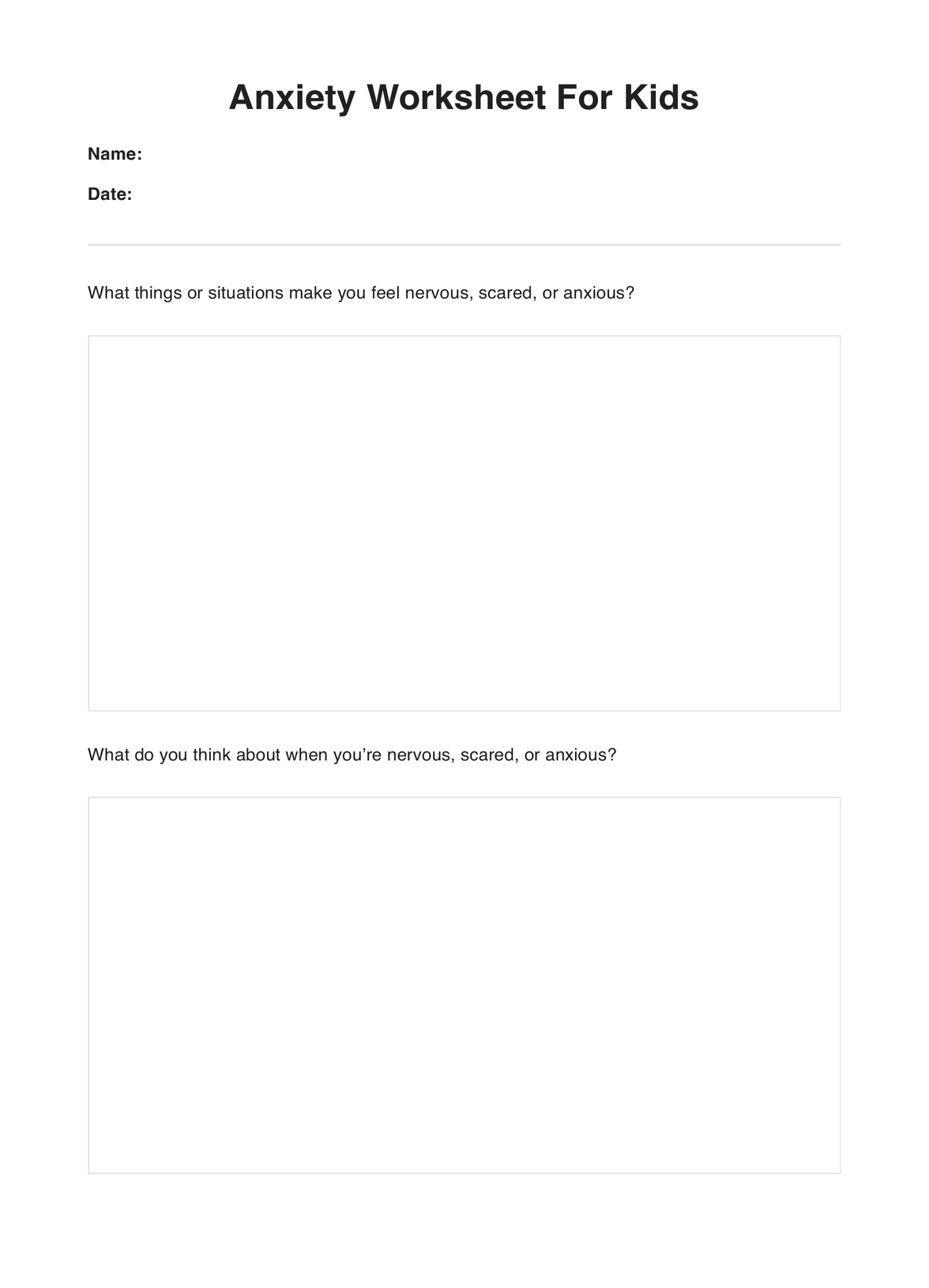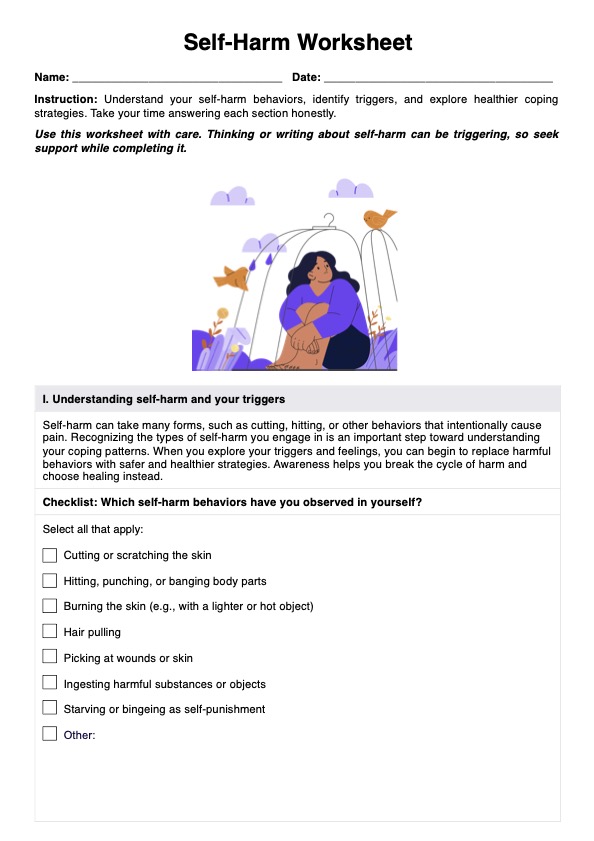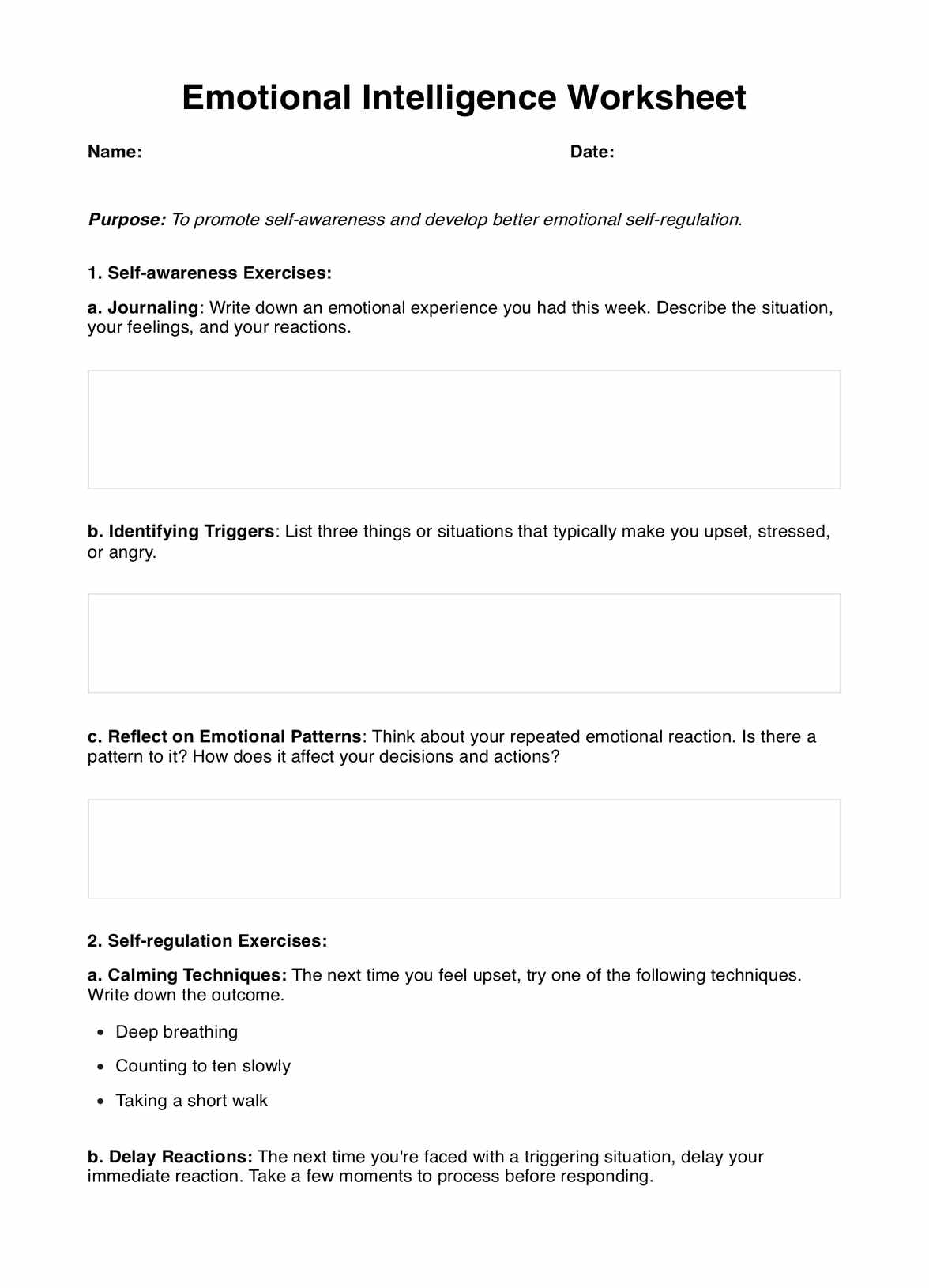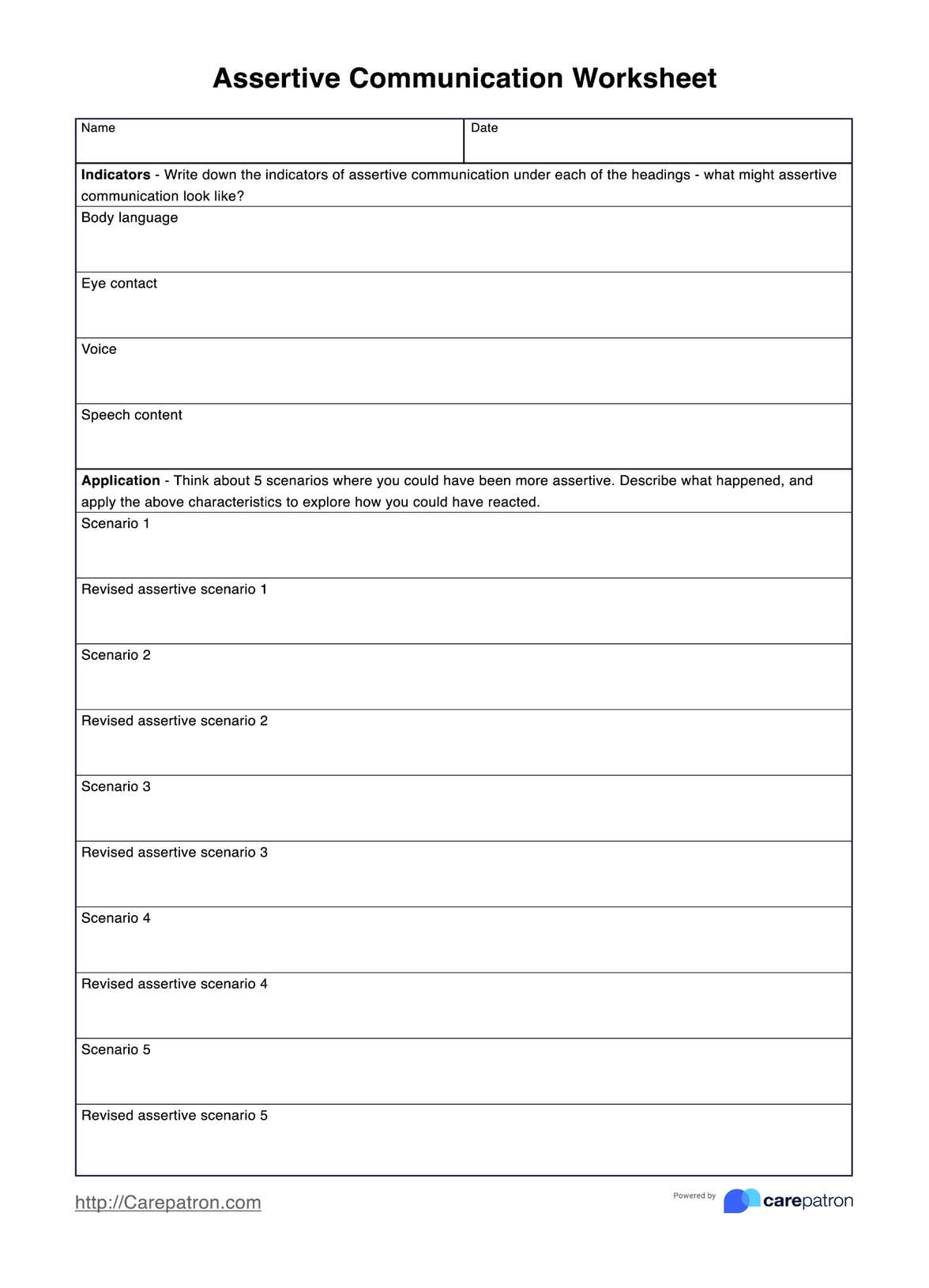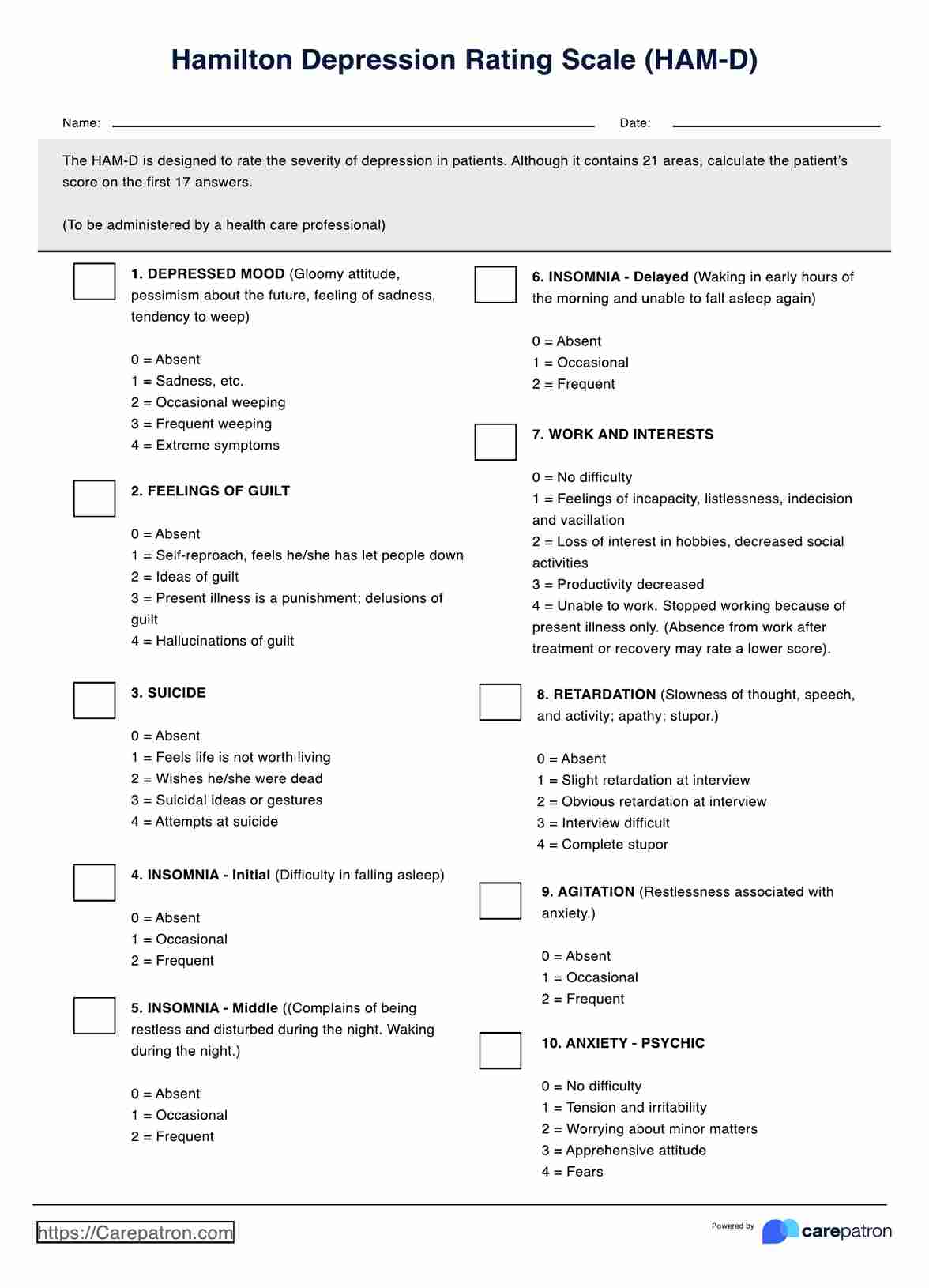Road Map to Recovery CBT Worksheet
Discover the Road Map to Recovery CBT Worksheet for effective substance abuse recovery and holistic mental health support.


What is Cognitive Behavioral Therapy?
(CBT) is a therapeutic approach that delves into the intricate relationship between thoughts, emotions, and behaviors. It's a versatile psychological tool, and its application in tackling substance abuse is particularly noteworthy.
In substance abuse treatment, CBT functions as a compass, guiding individuals toward recovery by addressing the cognitive and behavioral aspects perpetuating addiction. Here's a fresh perspective on how CBT is employed in this context:
CBT helps individuals unearth the hidden triggers that prompt them to use substances. Pinpointing these triggers unravels the complex web of factors contributing to their addiction. CBT invites individuals to become thought detectives, scrutinizing their beliefs about substance use. For instance, someone may believe they can't face life's challenges without relying on drugs. CBT intervenes by reshaping this belief, offering alternative coping strategies, and fostering a new mindset.
CBT isn't just about theoretical insights; it's convenient. It equips individuals with a toolbox of coping mechanisms to confront cravings, stress, and triggers head-on. Patients learn to navigate life's challenges without substance use through problem-solving exercises, relaxation techniques, and asserting themselves.
Patients with their therapists chart a course towards recovery. This collaborative process empowers individuals, giving them a clear vision and motivation to work towards a substance-free life.
CBT isn't merely a short-term fix. It empowers individuals with the ability to recognize early warning signs of relapse and arm themselves with strategies to prevent it. Individuals become architects of long-term recovery by acknowledging high-risk situations and practicing effective coping strategies.
Road Map to Recovery CBT Worksheet Template
Road Map to Recovery CBT Worksheet Example
How to use the Road Map to Recovery CBT Worksheet:
Step 1: Worksheet Introduction
Begin by familiarizing yourself with the Road Map to Recovery CBT Worksheet. Understand its purpose, which is to guide you through the process of CBT related to substance abuse recovery.
Step 2: Self-Assessment
Start by conducting a self-assessment. Reflect on your substance use, triggers, and associated thoughts and emotions. This reflective step lays the foundation for your recovery journey.
Step 3: Identifying Triggers
In this worksheet section, identify the triggers that lead you to use substances. These triggers could be stress, peer pressure, or specific environments. List them comprehensively to gain clarity.
Step 4: Challenging Negative Thoughts
Once you've identified triggers, challenge the negative thoughts associated with them. Write down these thoughts and explore their validity. CBT encourages you to reframe these thoughts with a more balanced perspective.
Step 5: Developing Coping Strategies
Move on to devising coping strategies. List practical ways to deal with triggers and negative thoughts without resorting to substance use. These strategies may include mindfulness techniques, relaxation exercises, or seeking support from friends and family.
Step 6: Setting Goals
Set clear, achievable goals for your recovery journey. These goals should be specific, measurable, and time-bound. Use this section to define what success looks like for you.
Step 7: Relapse Prevention Plan
Finally, create a relapse prevention plan. Identify early warning signs of relapse and outline strategies to avoid it. This step ensures that you're well-prepared to maintain your progress.
Step 8: Regular Review
Periodically revisit the Road Map to Recovery CBT Worksheet to assess your progress. Adjust your coping strategies, goals, and relapse prevention plan to adapt to your evolving needs.
When would you use this Road Map to Recovery CBT Worksheet?
The Road Map to Recovery CBT Worksheet is a valuable resource that can be used in various contexts and by a range of healthcare professionals to support individuals struggling with substance abuse. Here are some of the best and most appropriate times to use this assessment tool:
- Initial Assessment and Treatment Planning: Substance abuse treatment often begins with a comprehensive assessment of an individual's addiction history, triggers, and mental health. During this phase, healthcare professionals, such as addiction counselors, therapists, and psychiatrists, can gather crucial information from the Road Map to Recovery CBT Worksheet. It helps identify triggers, negative thought patterns, and coping strategies for tailoring a personalized treatment plan.
- Rehabilitation Programs: In residential or outpatient rehabilitation programs, individuals can benefit from using this worksheet in their therapy sessions. Therapists and counselors can guide clients through the worksheet to help them gain insights into their addiction and develop skills to manage cravings and triggers effectively.
- Ongoing Therapy and Follow-Up: Recovery from substance abuse is a continuing process. Healthcare professionals can use the Road Map to Recovery CBT Worksheet during regular therapy sessions to track progress, adjust goals, and refine coping strategies. It is a dynamic tool to ensure individuals stay on course and prevent relapse.
- Support Groups and Peer Counseling: Support groups, led by trained facilitators or peer counselors, can incorporate this worksheet to foster self-reflection and discussions among group members. It encourages peer support and shared learning, making it a versatile resource in community-based recovery programs.
- Aftercare and Relapse Prevention: Post-rehabilitation, maintaining sobriety is a critical phase. The Road Map to Recovery CBT Worksheet can be a central component of an individual's relapse prevention plan. Healthcare professionals can revisit and update the worksheet to adapt to changing circumstances and challenges.
What are the benefits of using this Road Map to Recovery CBT Worksheet?
1. Structured Self-Reflection
The worksheet provides a structured framework for individuals to reflect on their addictions, triggers, and thought patterns. This process of self-reflection can be a powerful catalyst for personal insight and awareness.
2. Personalized Treatment Planning
Based on the information gathered using the worksheet, healthcare professionals can develop highly personalized treatment plans. This tailored approach is linked to improved treatment outcomes.
3. Enhanced Coping Skills
The worksheet equips individuals with practical tools to manage cravings and stressful situations by guiding users through identifying triggers and developing coping strategies.
4. Goal Setting and Motivation
Setting clear, measurable goals within the worksheet enhances motivation and a sense of purpose in recovery.
5. Relapse Prevention
The worksheet aids in creating a comprehensive relapse prevention plan, a crucial aspect of long-term recovery.
6. Ongoing Monitoring and Adaptation
The worksheet can be revisited and adjusted, allowing for ongoing monitoring and adaptation to changing circumstances. This adaptability aligns with the continuous care and recovery support principles emphasized by the Substance Abuse and Mental Health Services Administration (SAMHSA).
Commonly asked questions
The time to complete the worksheet varies depending on individual needs and engagement. It can range from a single session to several sessions over weeks or months.
The Road Map to Recovery CBT Worksheet is often available as a downloadable PDF or through therapy and counseling sessions. It can be obtained from healthcare professionals or online resources.
The worksheet is best used during substance abuse treatment, including initial assessment, therapy sessions, rehabilitation, and as part of ongoing relapse prevention and monitoring efforts.


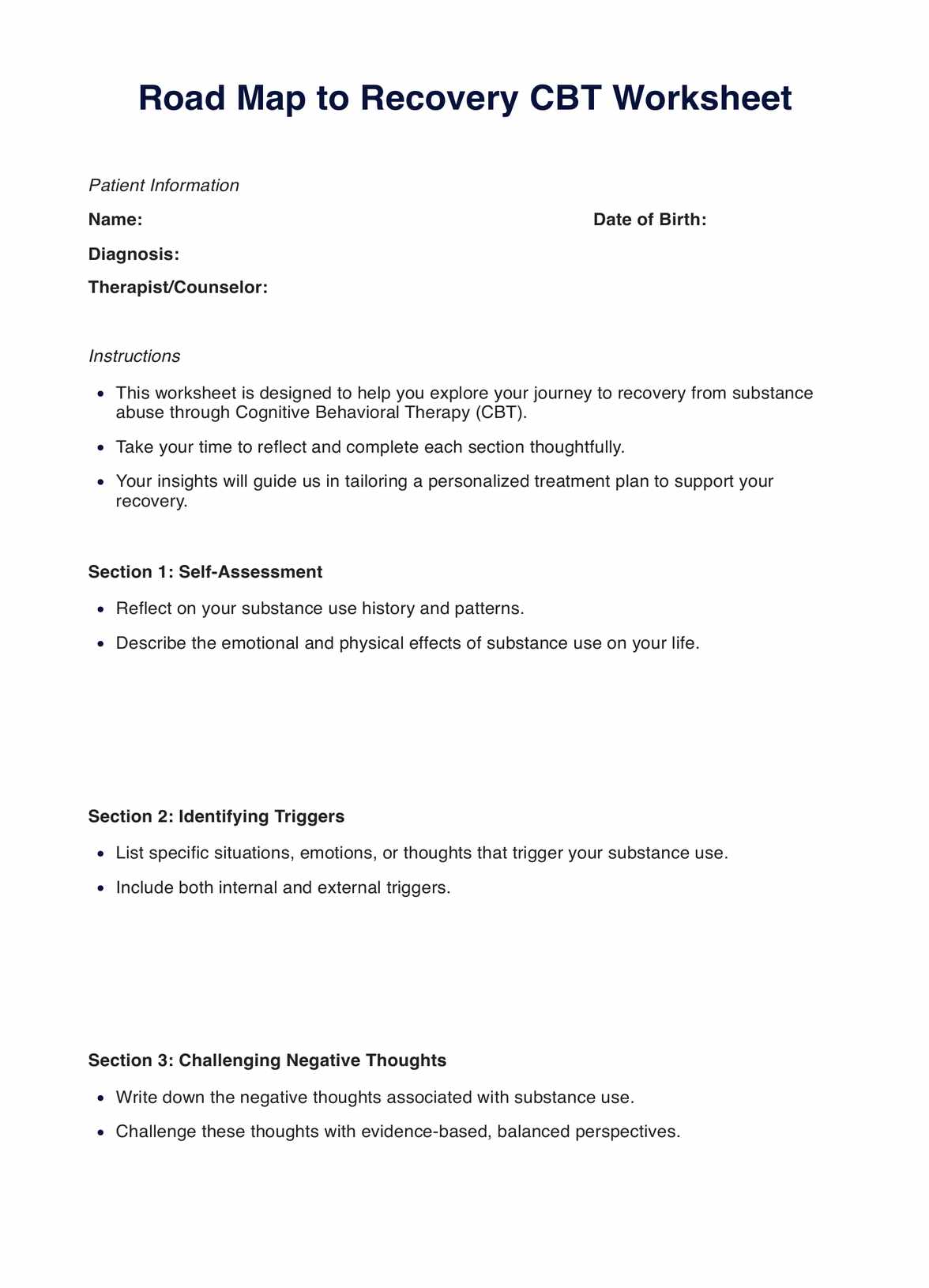
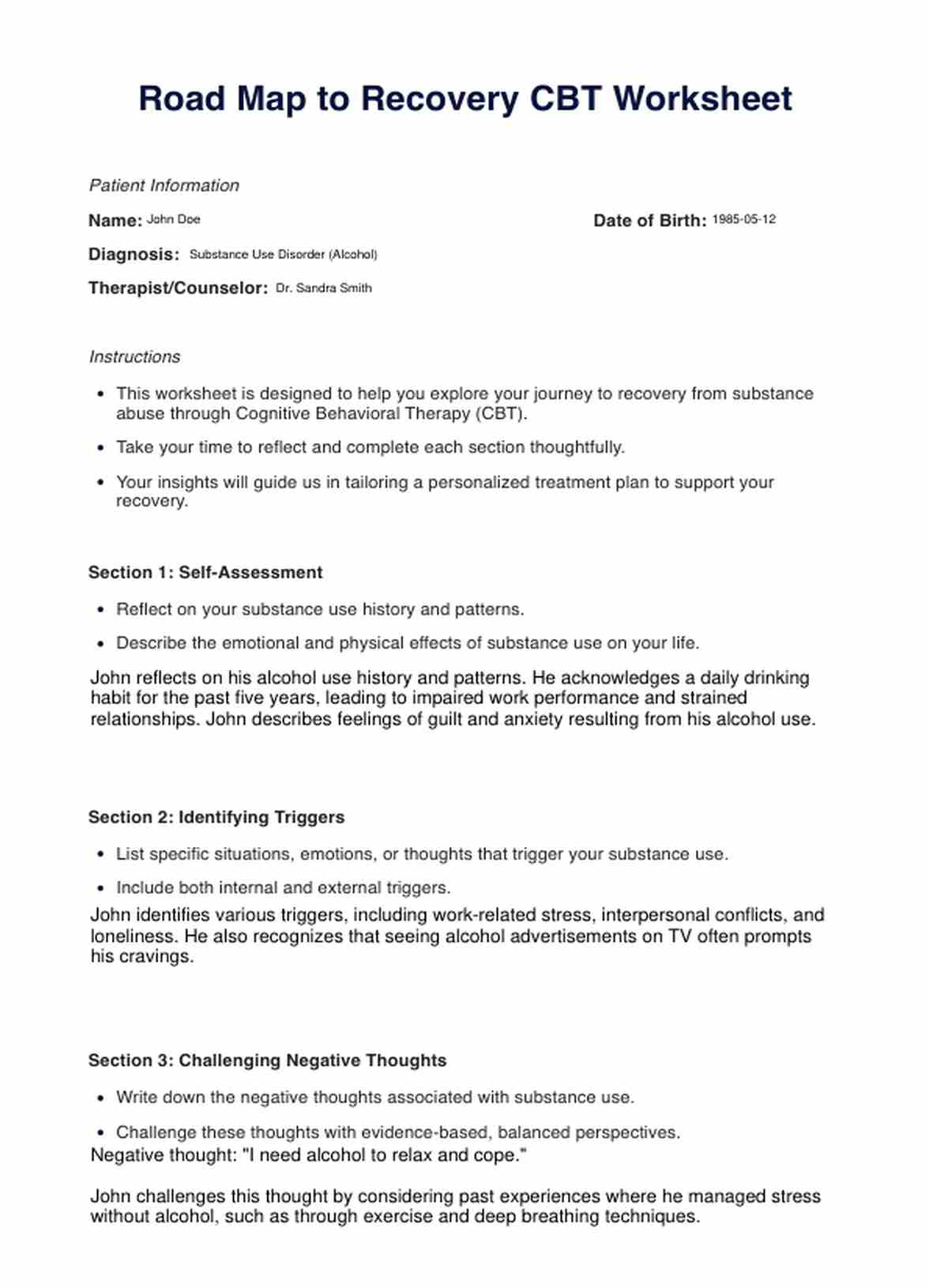

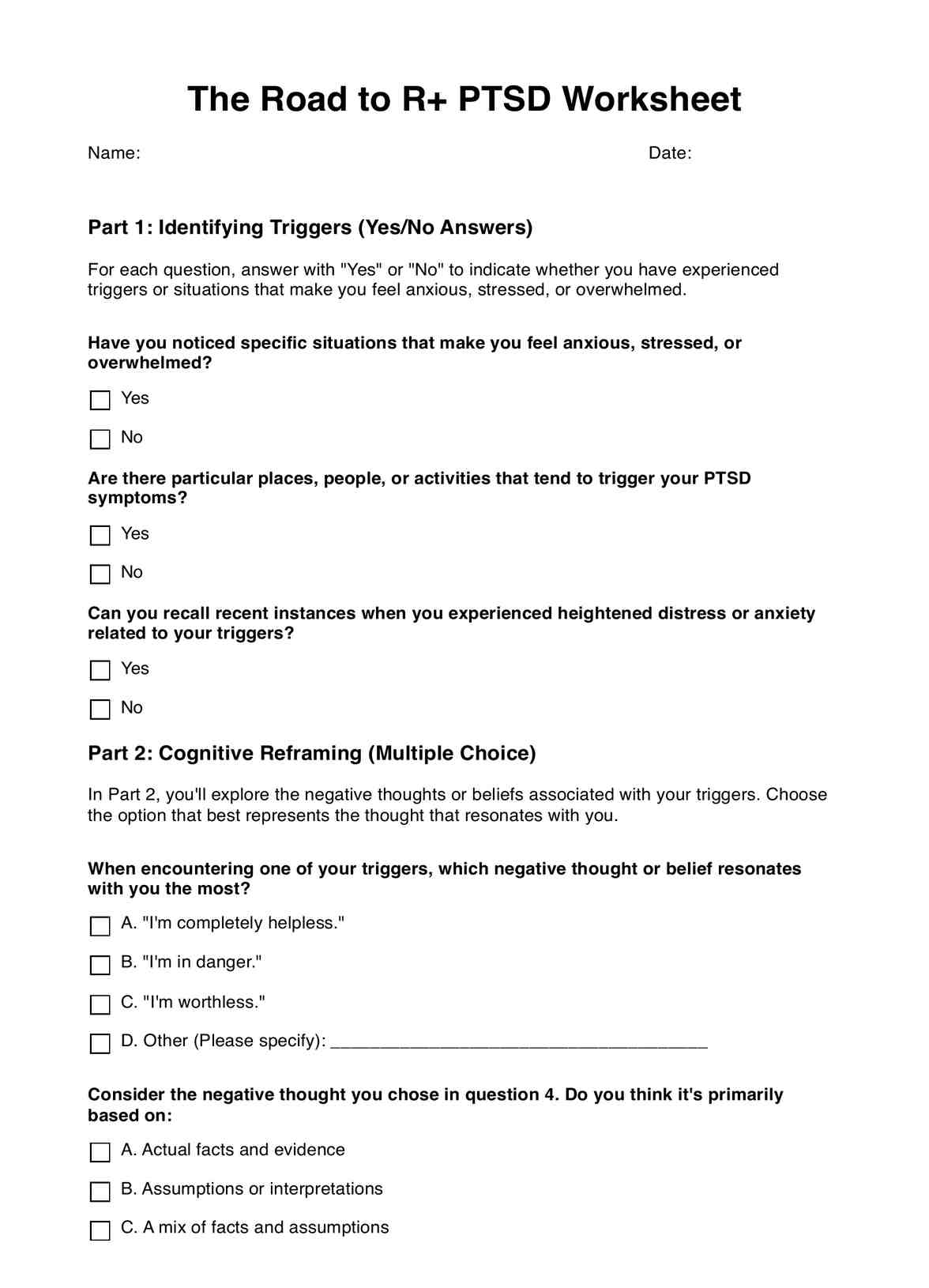














-template.jpg)


